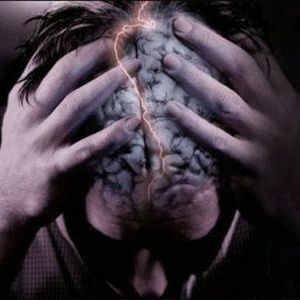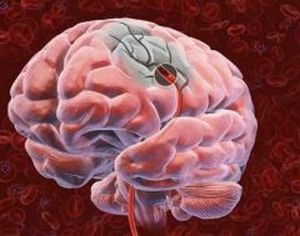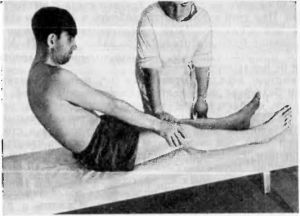
Modern life is going on in such a crazy rhythm that an ordinary person has to more and more speed up their actions, less sleep, work without days off, and stresses have long become an integral part of our existence.
And in this hurry, we sometimes have no time to look back and listen to complaints of close people for ill health or to think about their own.
Therefore, is it any wonder that today the death rate associated with cerebral vascular lesions has increased markedly, and it is diagnosed already in those who do not have 40 years.
In order not to fall into this avalanche, which grabs more and more lives, we will try to understand what the cerebral circulation is and what causes and mechanisms cause its violation. This will give us the opportunity to take protective measures.
Contents of
- What is cerebral circulation?
- Causes of cerebral circulation disorder
- Arterial hypertension
- Vascular atherosclerosis
- Changes in cervical spine
- Types of violations
- Symptoms and signs
- Signs of acute disorder
- Chronic violation
- Diagnosis
- Video: Circulatory blood circulation disorder
What is cerebral circulation?
So, the blood circulation that occurs in the system of the vessels of the spinal cord and the brain is called cerebral circulation( MK).
The cerebral vessels themselves have such a unique and irreproachable structure that it allows to ensure a constant blood circulation and excellent regulation of blood flow.
For example, if mental activity increases the amount of blood that circulates in the brain does not change. This is achieved through a good redistribution of blood flow.
Blood is sent to departments with intensive cerebral activity from the brain departments experiencing less stress.
 What you need to know about the medicine Vesticap - instructions for use, reviews and analogues, pluses and minuses of the drug.
What you need to know about the medicine Vesticap - instructions for use, reviews and analogues, pluses and minuses of the drug.
The characteristics of absences in children and adults - the causes, symptoms and correct actions in case of an attack.
Causes of cerebral circulation disorder
Causes of cerebral circulation disorders of can be:
- hypertension;
- atherosclerosis;
- degenerative disorders of the cervical spine;
- physical overstrain and stress;
- changes in heart valves;
- rheumatic heart disease;
- migraine;
- heart disease and blood vessels.
Also a disorder of cerebral circulation can be caused by:
- radiation sickness;
- with a complicated migraine;
- by cerebral hemorrhage;
- craniocerebral trauma and other factors.
Let's consider in more detail the factors causing MC violations.
Arterial hypertension
So, hypertension, or more correctly say arterial hypertension.
This disease is characterized by the fact that during the day there are sharp changes in blood pressure. It happens either excessively reduced or high.
Therefore, there are changes in the walls of small vessels that feed deep parts of the brain. All this leads to gradual narrowing of the vessels , and sometimes to their closure.
In the event of another jump in high blood pressure, the vessel may break. As a result, blood penetrates into the brain substance - there is an intracerebral hematoma( cerebral hemorrhage).
Vascular atherosclerosis
The next factor is arteriosclerosis of the vessels. Due to the course of the disease, cholesterol plaques obstruct the blood vessels. Controlling the cholesterol level in the blood in this  case is very important.
case is very important.
Where there is narrowing, and blood flow is gradually accumulating platelets, then thrombi form. When a blood clot breaks, it can clog the cerebral vessel. This causes a violation of MC.
Changes in the cervical spine
As for changes in the cervical spine, such diseases as osteochondrosis and scoliosis are well known. But not everyone understands how serious the consequences of such diseases can be.
Since the functioning of the human body largely depends on changes in the spine, the disease of its cervical spine may eventually lead to a violation of the MC.
Against the backdrop of stressful situations, especially if they are repeated often, an unexpected increase in blood pressure is a serious enough cause for a malfunction.
Also, one of the possible causes of circulatory disorders of the brain is the presence of craniocerebral injury , which can cause intracranial hemorrhage.
On its vastness depends the magnitude of disturbance of the circulatory process in the vessels of the brain.
Types of disorders
Blood flow disorders in the brain are acute and chronic.
Acute cerebrovascular accident( stroke) - begins unexpectedly and is accompanied by a prolonged course of the disease. It is characterized by a sustained cerebral dysfunction and the presence of two varieties:
- ischemic disorder( the so-called cerebral infarction);
- hemorrhagic( cerebral hemorrhage).
 Atherosclerosis very often serves as an excuse for the development of ischemic circulatory disorders. It occurs during great physical exertion or stress and severe anxiety.
Atherosclerosis very often serves as an excuse for the development of ischemic circulatory disorders. It occurs during great physical exertion or stress and severe anxiety.
Concomitant of pre-infarction or myocardial infarction. Typically, it happens at night when a person sleeps or immediately after waking up.
The development of hemorrhagic blood flow disorders, or else hemorrhages, can be facilitated by the presence of vascular aneurysms, congenital angiomas, various arterial hypertension.
Disorder of the cerebral circulation of the chronic type , or dyscirculatory encephalopathy - represents insufficient blood circulation in the brain.
It, slowly progressing, leads to the formation of a mass of small-focal necrosis of the brain tissue and a disruption of brain functions. Over time, the disease intensifies both quantitatively and qualitatively.
There are two types of disorders: : associated with atherosclerosis and hypertension.
Symptoms and signs of
What are the signs and symptoms of cerebral circulation?
Signs of acute disorder
Acute cerebral circulation disorder has symptoms in the form of transient ischemic attacks and hypertensive cerebral crises.
As for transient ischemic attacks, the symptoms appear unexpectedly and increase gradually. They are expressed:
- in speech difficulty;
- in violation of traffic coordination;
- weakness and numbness of the limbs.
In the case of hypertensive cerebral crises, occurs:
- severe pain in the head and eyeballs;

- appears sweating and stuffiness of the ears;
- pulls to sleep and can vomit;
- occurs redness of the face.
Chronic disorder
Chronic infringement of MK from acute forms is characterized by its gradual development. There are three stages to this disease:
- On the first - the symptoms are not pronounced, the patient complains of fatigue, frequent dizziness, headache, restless sleep, mood changes, absent-mindedness, forgetfulness.
- The second stage of the is accompanied by some changes in the gait, shakiness appears in the movement, memory deterioration progresses, there is added insufficient attention and perception of information, drowsiness, irritability, and reduced efficiency are further intensified.
- The third stage of is a marked impairment of the motor functions of the arms and legs, a conspicuous violation of speech and memory, marked by dementia.
Diagnosis of
The threat of MK disruption is that if in the early stages of treatment is not performed, the main elements of the brain structure - the neurons - die, and they can not be revived. Therefore, it is necessary to conduct diagnostics even in the early stages of the disease.
This includes the establishment of a diagnosis based on from:
- patient complaints;
- complex of blood tests: for glucose, lipid spectrum, general blood test, coagulogram and others;
- examination of the ophthalmologist and eye fund diagnosis;
- data on detection in the early stages or already existing for a long time of such diseases as atherosclerosis, diabetes mellitus, blood diseases, hypertension;
- data obtained by testing, on the conduct of a special neuropsychological examination;
- data of special scanning, which allows to determine the presence of lesions of cerebral vessels;
- and, if necessary, the data of the conducted examination with the help of magnetic resonance tomography.
A severe result of acute and in many cases chronic MK disturbance is disability.20% of acute violations of MK result in death.
Video: Disturbance of cerebral circulation
A cognitive clip about how the blood circulation in the brain takes place. What happens if the cerebral circulation is disturbed?



